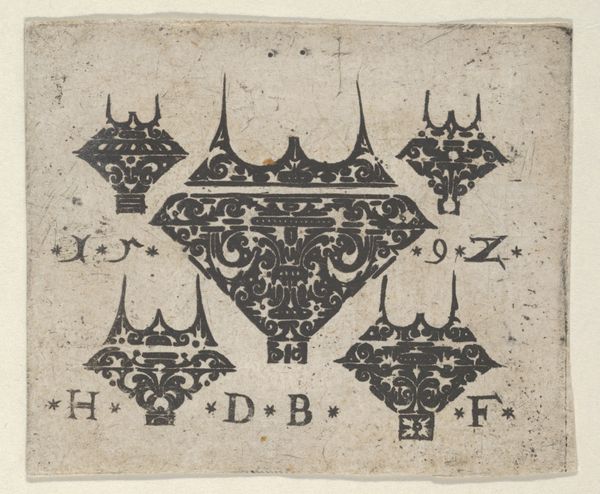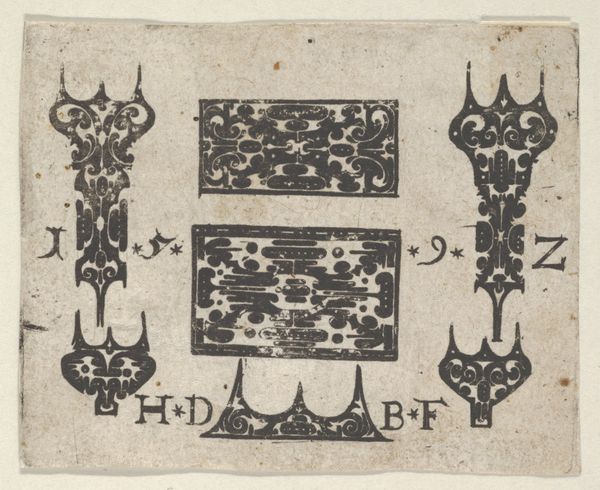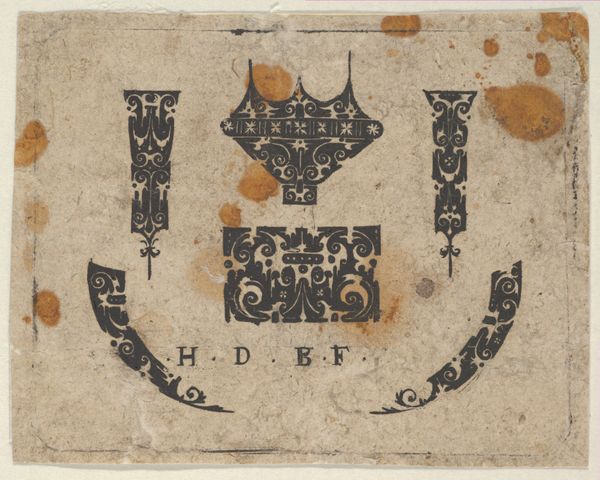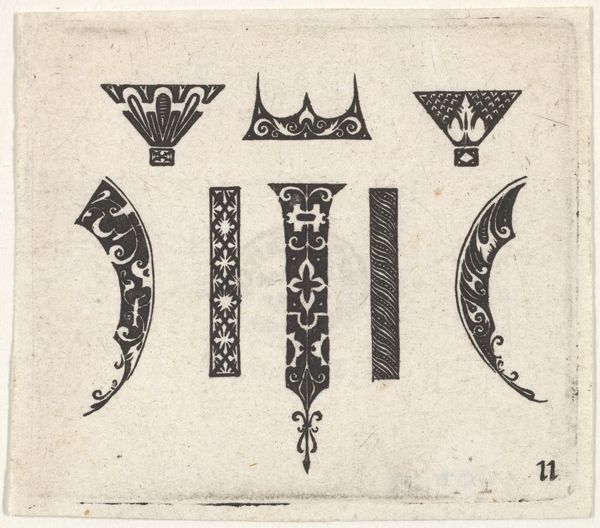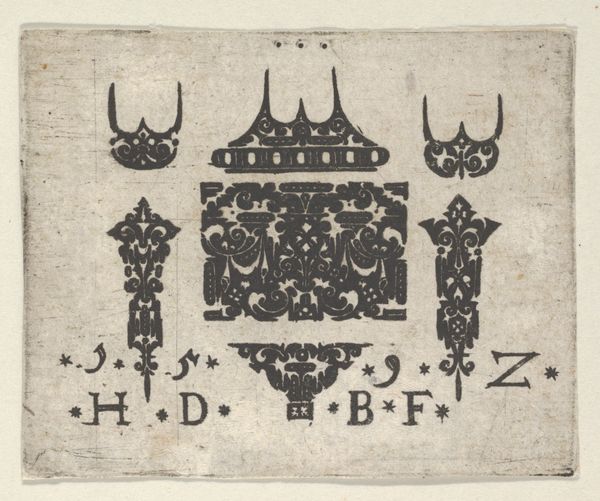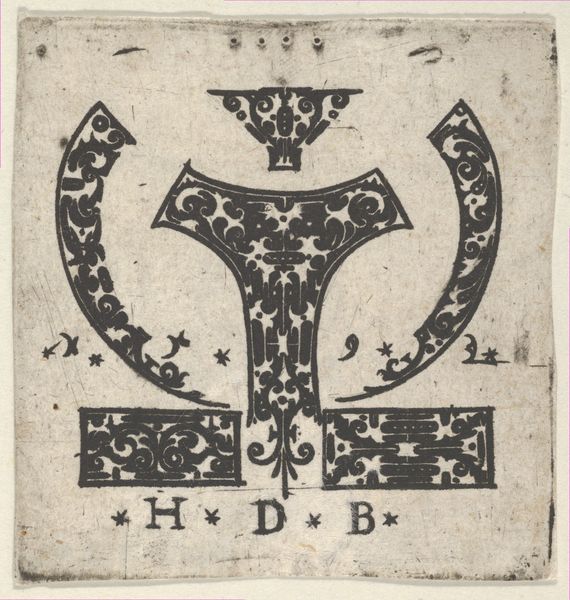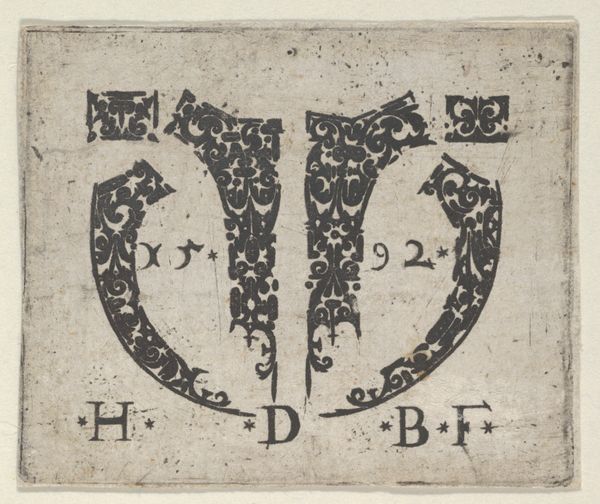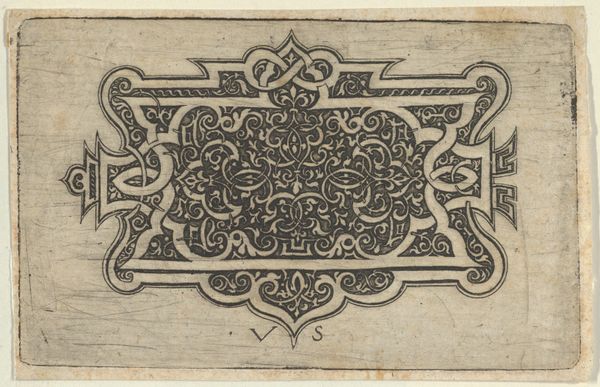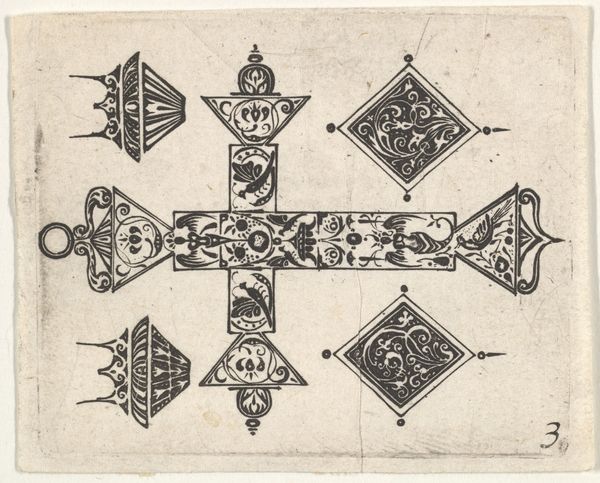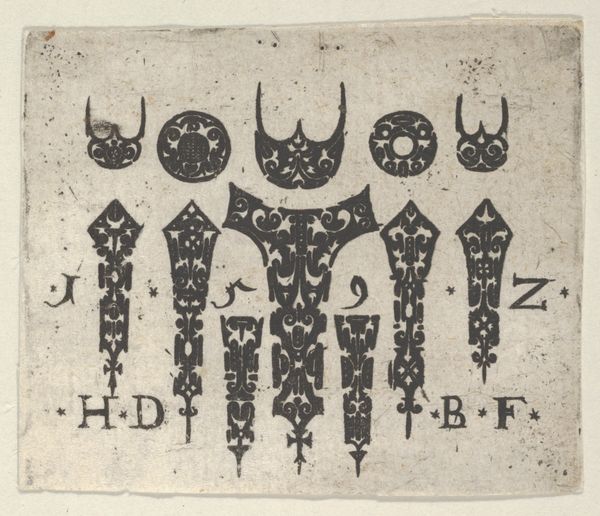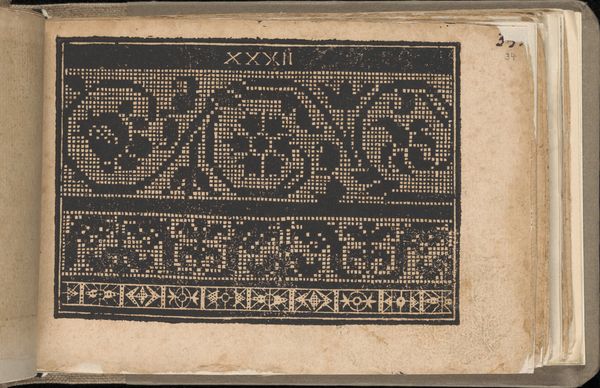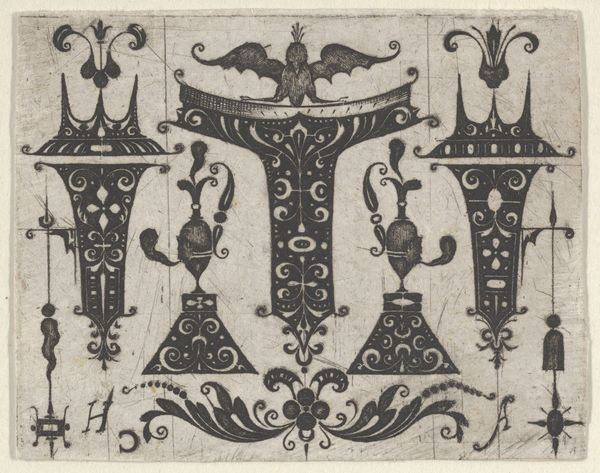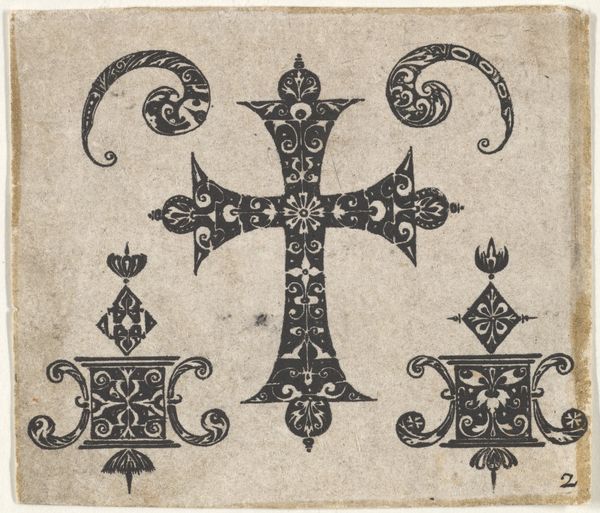
Blackwork Print with Design for a Ring Shoulder and Bezel Flanked by Pairs of Fillets 1592
0:00
0:00
drawing, print, engraving
#
drawing
# print
#
coloured pencil
#
geometric
#
engraving
Dimensions: Sheet: 1 7/8 × 2 1/4 in. (4.7 × 5.7 cm)
Copyright: Public Domain
Curator: Looking at "Blackwork Print with Design for a Ring Shoulder and Bezel Flanked by Pairs of Fillets," dating back to 1592 and created by Hans de Bull, one is immediately struck by its density of detail. Editor: Right, it's like a Rorschach test designed by a very meticulous jeweler. Intricate, yeah, but my first thought is "stern." Very little wiggle room. Curator: Indeed. As a blackwork print rendered via engraving, the artwork explores the relationship between positive and negative space. The stark contrast is critical. Editor: It’s all meticulously organized. What I find odd, maybe amusing, is how the design suggests a symmetrical ring motif but then subtly undermines it. One reads as inverted, for example. A little joke in there, perhaps? Curator: It’s likely less a joke and more an exercise in design variation. This print, held at The Metropolitan Museum of Art, exemplifies period techniques for ornamentation and jewelry making. Consider the implied volumes through strategically placed hatching. Editor: You’re absolutely right about that hatching! It is the very engine driving all these decorative curves into pseudo-3D existence. Still, knowing this was a blueprint, I find myself longing to see what rings actually sprang forth from this. What does “success” look like when translating this to precious metals and gems? Curator: An excellent question. This speaks to the value of prints in disseminating artistic ideas and craft knowledge across workshops and regions. Editor: It also makes me realize how "design" back then was less about branding or innovation and more about applying a set of accepted, somewhat austere, patterns to personal adornment. I get a sense of obligation to a stylistic order more than pure self-expression. Curator: That tension is very present here. One might ponder the dialogue between the artist's imposed grid and their flourish in executing the work—do they succeed in honoring that tradition while still adding a touch of individual invention? Editor: Agreed! Staring longer, those diamond forms at the bottom now feel less austere, more like tiny anchors daring to tether Hans’s name to posterity. The devil is, most definitely, in those granular details.
Comments
No comments
Be the first to comment and join the conversation on the ultimate creative platform.
